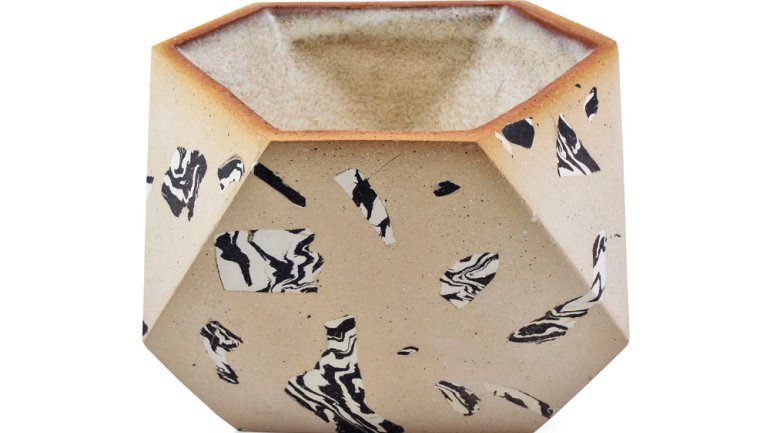Structurally Sound
Structurally Sound
Cody Hoyt grew up in Sarasota, Florida, a city so rich in midcentury modern architecture that a style, the Sarasota School, was named for it. As a kid, he was fascinated by the buildings he saw around him, designed by the likes of Paul Rudolph and I.M. Pei. He loved their sleek geometry, the concrete slabs and screen blocks, and especially the harmonious way these built structures integrated with the natural environment. Later, living in Los Angeles in his 20s, Hoyt was similarly enchanted by that city’s sprawl of mid-mod buildings amid the palm trees and desert succulents. “The combination of plants and landscaping in conjunction with architecture was inspiring, almost in a romantic way,” he recalls.
Today, Hoyt, a 34-year-old artist living in Brooklyn, has come to enjoy New York’s brand of modernist architecture – the high-rise, steel-and-glass kind – while retaining his nostalgia for the warmer, sun-kissed version. All of these influences are visible in his ceramics, handsome stoneware vessels that combine geometric form with free-form surface pattern, for a look that’s at once controlled and spontaneous, stylized and natural.
Psychedelic swirls marble an asymmetrical box. Bands of earth tones, like rock striations, wrap around a twisted jug. A slanted vase is covered in abstract chaos, reminiscent of a Jackson Pollock drip painting. Rather than decorate surfaces, Hoyt builds pattern directly into his pieces. He’ll begin by rolling out slabs of different raw clays, in natural tints ranging from red to almost black, sometimes adding powdered pigment for a pop of bright color. Then he’ll cut, layer, fold, embed, arrange, and otherwise mix and manipulate the clays to build the objects. Precisely what will emerge in the firing, he’s never quite sure.
“Incident is something I’ve been excited about in my studio work for a long time – like a mark or pattern or motif that looks organic, natural. I pick the clays and put them together, but ultimately I don’t design the surface. I push it a certain way, and then it designs itself.”
Along with pattern, Hoyt has always been drawn to geometric shapes and forms. “It’s a curiosity that comes from a really intuitive, internal place, not an interest in math or geometry per se,” he says. After earning a degree in printmaking from the Massachusetts College of Art and Design in 2007, he first explored his ideas through drawing. Eventually he realized it made sense to move to three dimensions, so he played around with paper, concrete, wood, “different options for making the objects that I had in my mind.”
Clay turned out to be the “responsive” material he was looking for: “As soon as I tried ceramics, it almost immediately became the ideal medium for me.” Self-taught, he’s been a full-time maker since 2012, having found an enthusiastic market for his work among interior designers.
Like an architect, Hoyt thinks a lot about interior space, how his pieces will look in a room, how people will live with them. While some are larger and more sculptural, others function beautifully as containers for plants, especially cacti and other succulents, which then become sculptural elements themselves.
“It kind of takes the piece in a different direction,” he says. “It’s fun to style. The person who owns it can either leave it as is and put it on the mantel, or buy a strange plant and keep it as a planter.”
As far as Hoyt is concerned, it’s just more incident, all good. “I like the idea that people can do whatever they want with it.”
A solo show of Cody Hoyt’s new work is at Patrick Parrish gallery in New York City through November 29.

